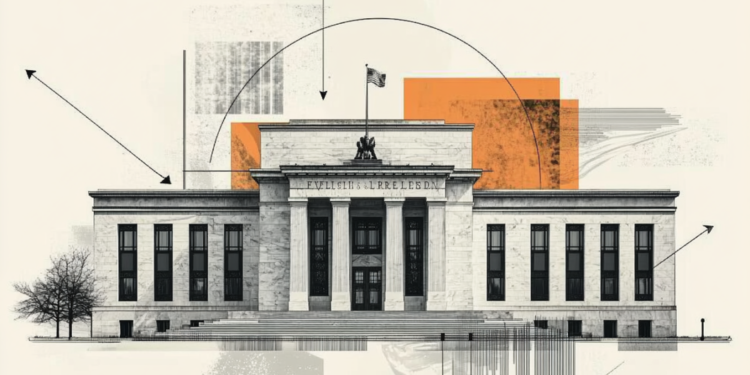Retirements, pensions and other benefits from the National Social Security Institute (INSS) that have amounts above the minimum wage must be readjusted by 5.93% this year.
This was the inflation variation in 2022 measured by the National Consumer Price Index (INPC) and released this Tuesday (10) by the Brazilian Institute of Geography and Statistics (IBGE).
With this, the INSS ceiling amount will be BRL 7,507.49, out of the BRL 7,087.22 paid in 2022.
The benefit floor, however, which accompanies the minimum wage, will have a greater readjustment than that, which should again cause a “flattening” effect of retirements and pensions, that is, of rapprochement between those who earn the lowest amount and those who earn the biggest.
After three years without a real increase, the minimum wage rose again more than inflation in 2023, which was a campaign promise of both former president Jair Bolsonaro and new president Luiz Inácio Lula da Silva, sworn in on 1 January.
The national wage floor will rise from BRL 1,212 in 2022 to at least BRL 1,302 this year, an amount defined by Bolsonaro by provisional measure in December and which is already valid for payments made from January.
It is a readjustment of 7.4%, or almost 1.5% more than last year’s inflation.
The value, however, can still be higher. This is because the Budget approved later in Congress for 2023, already with the participation of Lula’s transition team, provided for a minimum wage of R$ 1,320 for the year. It would be a total increase of 8.9%, and almost 3% above inflation.
The Budget, however, does not have the power to set the minimum wage, as he explained to CNN the Senate Budget Consultancy. He just estimates the value and reserves the necessary resources for its payment.
The exact number must, by the Constitution, recompose at least the previous year’s inflation and must be defined by law by the Executive Power.
With that, it is now up to the Lula government to publish a new provisional measure readjusting the minimum wage to the R$ 1,320 it forecast for the year, if this is its decision.
Speculation is that the government intended to do this until May, in order to “delay” the new increase and somewhat soften the billionaire impact that the higher readjustment adds to the accounts.
In this case, workers who receive the minimum wage, as well as retirement, pensions and benefits, such as the BPC, which follow the national minimum wage, would be paid at the new amount after the publication of the new MP.
According to the policy analyst at CNN Caio Junqueira, however, is already starting to gain more space in the government for the thesis of keeping the minimum wage as it is, at the lowest value of R$ 1,302.
Sought, the Ministry of Labor, which is responsible for the decision, has not yet responded to the report.
The minister of the portfolio, Luiz Marinho, had a press conference on the subject scheduled for Monday (9), but the agenda was postponed due to the criminal acts that took place in Brasília the day before and continues without a new date.
Real increases to the minimum wage
In 2020, 2021 and 2022, the minimum wage was readjusted only by the inflation of the previous year, after more than a decade in which the increase also predicted real gains.
Under the old rule, which had been in effect since 2004, the minimum should be automatically increased by the change in inflation in the previous year plus the GDP growth in the two years before.
The idea was to guarantee workers who receive the minimum wage an increase in purchasing power to the same extent as the productivity growth of the country’s economy, which, in general terms, is what GDP reflects.
Critics of automatic gain, however, point out that indexation can generate inflation, in addition to putting pressure on already tight government spending, since part of the pensions and salaries of civil servants rises together.
The rule that guaranteed the real gain was valid until the turn of 2018 to 2019, Bolsonaro’s first year in the Presidency, and was not renewed.
With that, the size of the readjustment started to be decided year by year by the president. The correction must always, however, comply with at least the increase in inflation, which is required by the Constitution.
INSS floor increases together
Lawyer Roberto de Carvalho Santos, president of the Institute of Social Security Studies (Ieprev), explains that, as with the minimum wage, the Constitution also requires that social security benefits have their purchasing power replaced annually by inflation.
That’s why the INSS readjustments by the INPC are practically automatic.
The floor of social security benefits, however, has the particularity of not being able to be less than the minimum wage, and that is why, every time the minimum wage is readjusted higher than inflation, the pension floor reaches a little closer to the ceiling.
This is what happened between 2004 and 2019, while the minimum valuation policy prevailed, and what happens again in 2023.
“In order for benefits greater than the minimum wage to actually gain, there would need to be a government decision for this”, says the president of Ieprev, “but this has only happened twice in the history of Social Security, in December 1998 and in December 1998. 2003”.
Source: CNN Brasil
A journalist with over 7 years of experience in the news industry, currently working at World Stock Market as an author for the Entertainment section and also contributing to the Economics or finance section on a part-time basis. Has a passion for Entertainment and fashion topics, and has put in a lot of research and effort to provide accurate information to readers.







